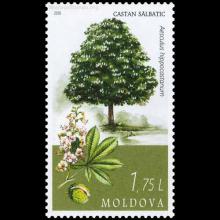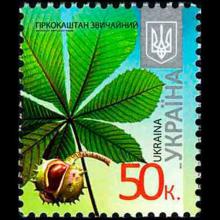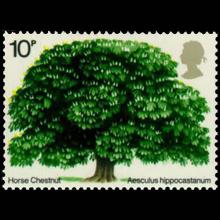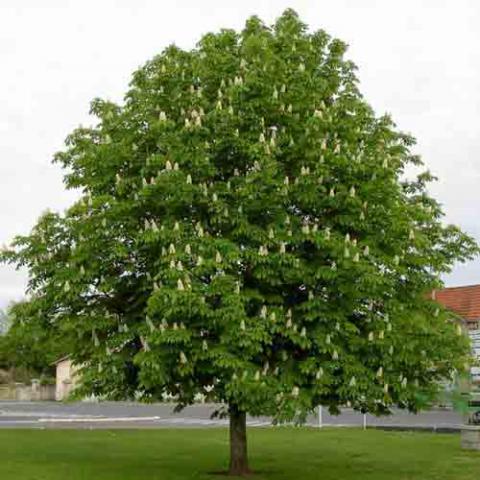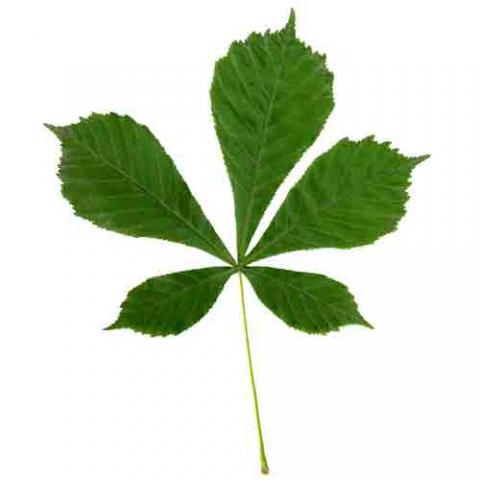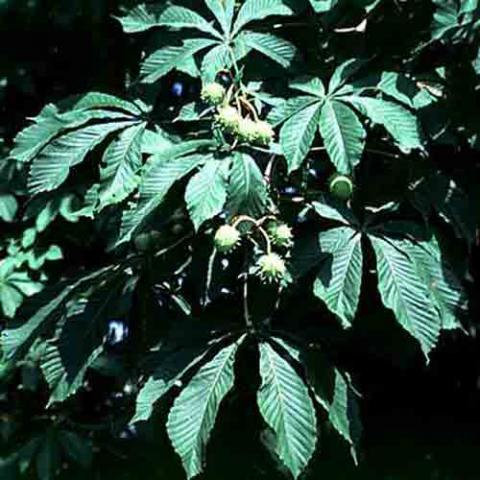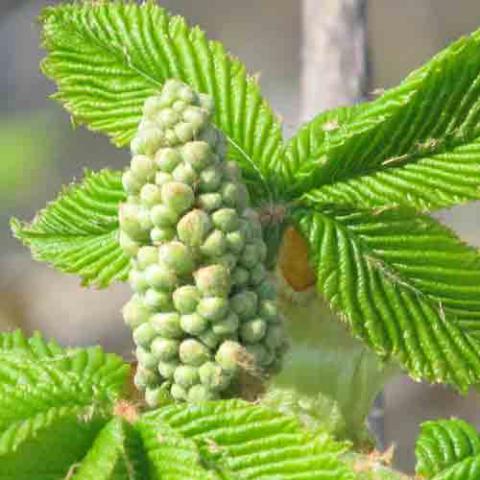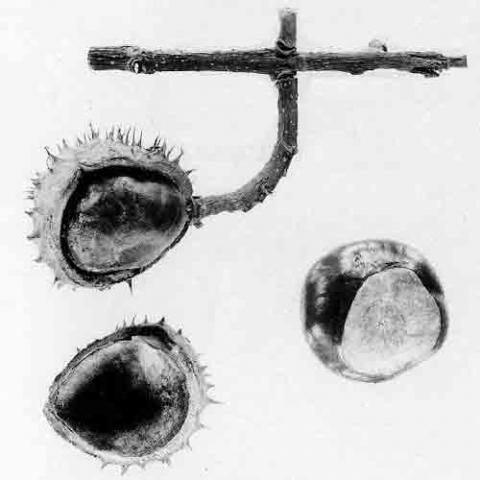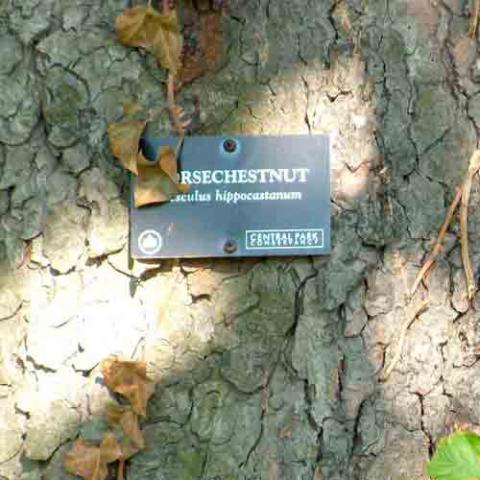NAME(S)
TAXONOMY
PLANTAE ID
THERAPEUTIC
Moldova
Issued:
Stamp:
Aesculus hippocastanum
Ukraine
Issued:
Stamp:
Aesculus hippocastanum
United Kingdom
Issued:
Stamp:
Aesculus hippocastanum
Moldova
Issued:
Stamp:
Aesculus hippocastanum
Ukraine
Issued:
Stamp:
Aesculus hippocastanum
United Kingdom
Issued:
Stamp:
Aesculus hippocastanum
Moldova
Issued:
Stamp:
Aesculus hippocastanum
Ukraine
Issued:
Stamp:
Aesculus hippocastanum
United Kingdom
Issued:
Stamp:
Aesculus hippocastanum
Anne Frank's spirit lives on in chestnut tree
Peter Fimrite, Chronicle Staff Writer, Feb. 3, 2010
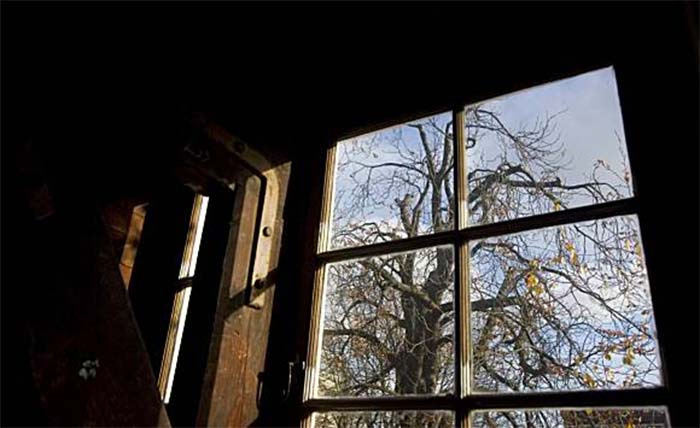
The tiny budding tree stashed behind a locked greenhouse door at Sonoma State University doesn't look particularly valuable, but the little plant is a precious link to one of the most heart-rending tales in human history.
The 18-inch-tall sapling was taken from the now-dying chestnut tree in Amsterdam that Anne Frank wrote about in her diary as she hid from the Nazis during World War II.
It is the first of 11 saplings from the tree that are being distributed throughout the United States to commemorate the doomed Jewish teen's enduring spirit in the face of unimaginable horror.
"The tree symbolizes her struggle against oppression and the human struggle," said Sam Youney, the director of landscaping for the university, which was awarded the sapling on Dec. 23. "She didn't live, but the tree lives on."
The original tree that cheered Anne Frank as she hid with her family in a shuttered Amsterdam building is a horse chestnut, or Aesculus hippocastanum. It is believed to be between 150 and 170 years old, one of the oldest in Amsterdam. Known as the Anne Frank Tree, it is racked with bacterial diseases and fungus, including Phytophthora ramorum, or sudden oak death.
Preserving the tree
The tree had been declining for several years when horticulturalists announced in 2007 that it would have to be chopped down. The news caused an international uproar that resulted in a decision to preserve the tree as long as it is still alive. Workers have put up braces and structural supports to prevent the tree from falling, but no one expects it to survive long - from five to 15 years at most, according to experts.
In an effort to carry on the legacy, cuttings, or grafts, were taken from the tree, and the first of 150 saplings were planted in Amsterdam in December. The Anne Frank House museum, which includes the apartment where the Jewish teen hid, and the New York-based Anne Frank Center USA are donating 11 saplings to sites in the United States, including the White House and the National September 11 Memorial and Museum in New York.
Sonoma State was the first location in the United States to receive a sapling and the only place in California that was given the honor. Seven sites in Japan have also received saplings.Elaine Leeder, Sonoma State's dean of social sciences, said the school was chosen because of its history of teaching about the Holocaust. The university has held a Holocaust and genocide lecture series for 30 years and regularly hosts reunions of Holocaust survivors.
"It is a great honor," said Leeder, who came up with the idea to submit a proposal for one of the saplings. "We're thrilled and moved deeply by this honor."
Anne's view
Anne Frank could see the old chestnut through an attic skylight while she, her family and several Jewish friends hid inside a secret annex in a warehouse and office building on Amsterdam's Prinsengracht Street. She referred to it longingly in her diary.
"From my favorite spot on the floor I look up at the blue sky and the bare chestnut tree, on whose branches little raindrops shine, appearing like silver, and at the seagulls and other birds as they glide on the wind," she wrote on Feb. 23, 1944. "As long as this exists, I thought, and I may live to see it, this sunshine, the cloudless skies, while this lasts I cannot be unhappy."
She also described her time in the attic with one of the other occupants of the hideout: "The two of us looked out at the blue sky, the bare chestnut tree glistening with dew, the seagulls and other birds glinting with silver as they swooped through the air, and we were so moved and entranced that we couldn't speak."
In other passages, she described the tree's spring blossoms and abundant leaves.
Gone at 15
The group was hidden in the apartment for 25 months until being betrayed and, in August 1944, rounded up by the Gestapo. Anne Frank died of typhus in the Bergen-Belsen concentration camp in March 1945, just weeks before British liberators rolled into the camp. She was 15.
Her father, Otto Frank, was the family's sole survivor of the Holocaust. In 1947, he arranged the publication of "Anne Frank: the Diary of a Young Girl," a tragically beautiful documentation of hope amid evil and hopelessness. Anne Frank has since become a worldwide symbol of the Holocaust, and her words are read by millions of schoolchildren every year.
Sonoma State's plan is to raise the tree for three years in a locked shade house to protect it from insects and rodents and make sure it is disease free before planting it at the school's Erna and Arthur Salm Holocaust & Genocide Memorial Grove. A 10-foot glass memorial, designed and crafted by Jann Nunn, the university's professor of sculpture, was placed in the grove last year, along with train tracks incorporating bricks etched with the names of people who died in the Holocaust and in other massacres and mass killings around the world.
Next to the tree, which is expected to grow to 80 feet tall, will be a sign with an excerpt from Anne Frank's diary.
"How wonderful it is," the excerpt reads, "that nobody need wait a single moment before starting to improve the world."
Reference: sfgate.com
Genus species (Plantae): Aesculus hippocastanum
Aesculus hippocastanum is a large tree, growing to about 39 meters (128 ft) tall with a domed crown of stout branches; on old trees the outer branches are often pendulous with curled-up tips. The leaves are opposite and palmately compound, with 5–7 leaflets; each leaflet is 13–30 centimeters (5.1–11.8 in) long, making the whole leaf up to 60 centimeters (24 in) across, with a 7–20 centimeters (2.8–7.9 in) petiole. The leaf scars left on twigs after the leaves have fallen have a distinctive horseshoe shape, complete with seven "nails". The flowers are usually white with a yellow to pink blotch at the base of the petals; they are produced in spring in erect panicles 10–30 cm tall with about 20–50 flowers on each panicle. Its pollens are not poisonous for honey bees. Usually only 1–5 fruits develop on each panicle; the shell is a green, spiky capsule containing one (rarely two or three) nut-like seeds called conkers or horse-chestnuts. Each conker is 2–4 centimeters (0.79–1.57 in) in diameter, glossy nut-brown with a whitish scar at the base.

